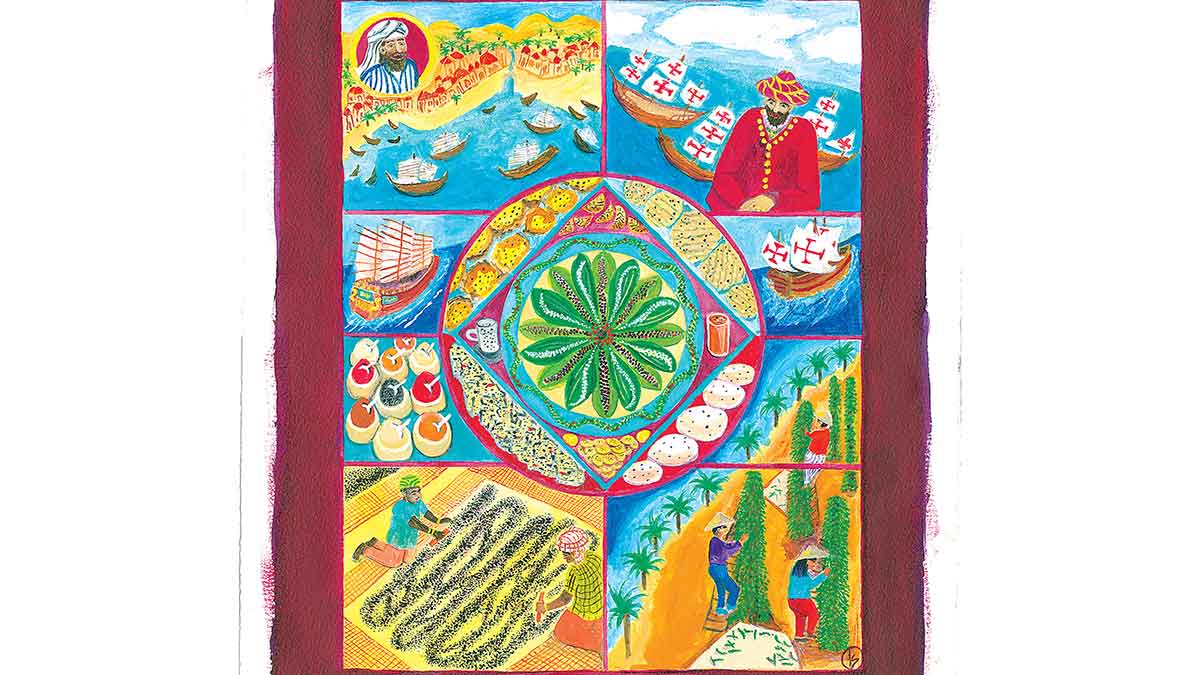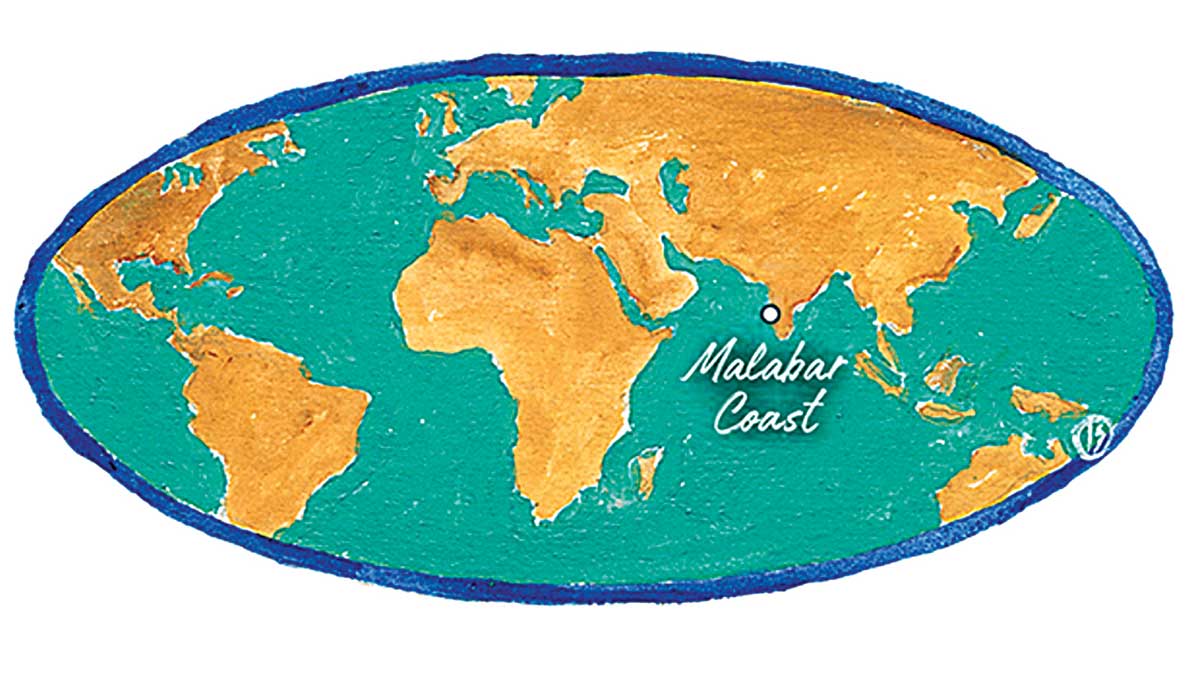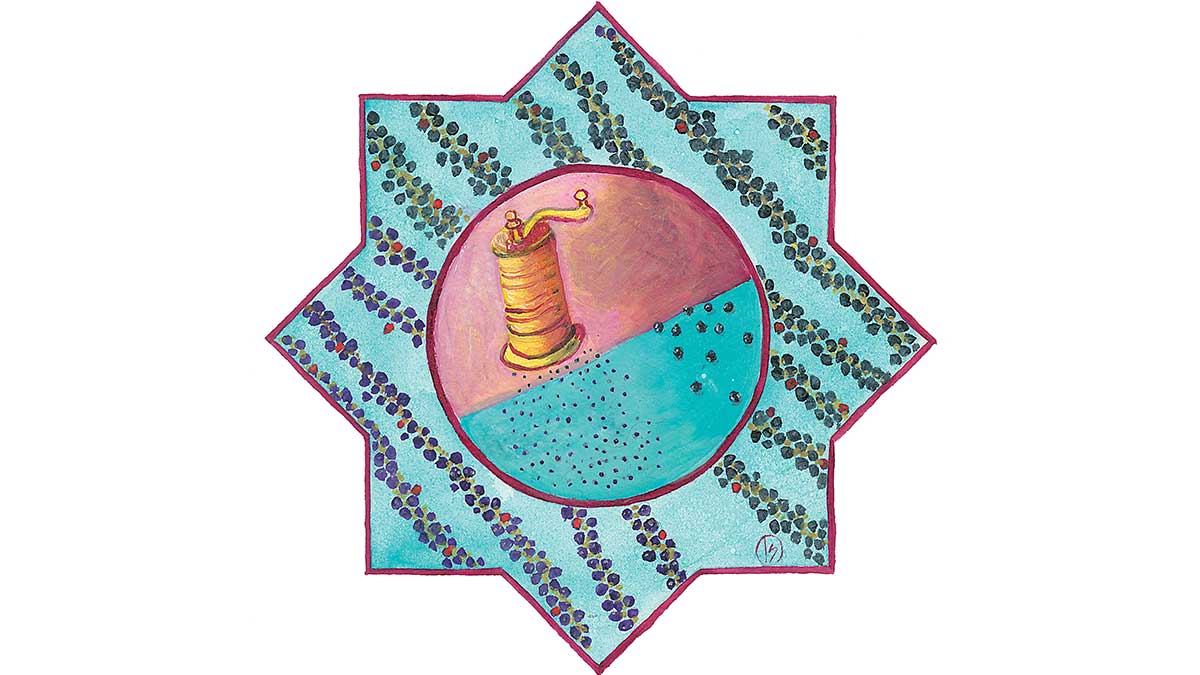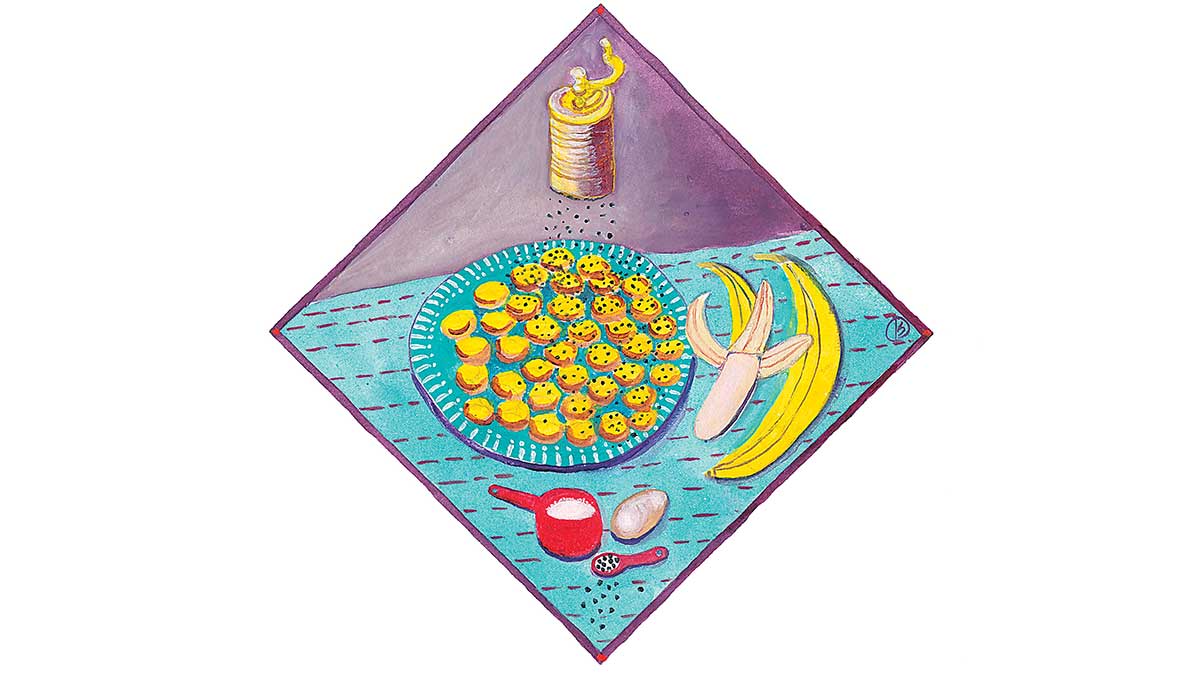Aramco World
AramcoWorld: Black Pepper – the king of spices

Global July 04, 2021
Historically, spices have marked the trail of men as they share seasons and culture.
This is pepper country, the Moroccan traveler Ibn Battuta declared of Malabar, India’s southwest coast along the Arabian Sea. Admiring the tropical forests and hills made bountiful by monsoon rains, there was “not a span of ground or more but is cultivated,” he observed. “Every man has his own separate orchard,” and these extend down the coast for the distance of “a two-month march” (about 400 kilometers).
Among the many ports in Malabar he visited in the 14th century, the “flourishing and much frequented” Kozhikode, known then as Qaliqut, today in the state of Kerala, stood out. In its harbor, he wrote, “gather merchants from all quarters,” such as China, Java, and Sri Lanka to the east and the Maldives, Yemen, and Persia to the west.
Many of them traded in spices — especially cloves, nutmeg, and cinnamon from further east and cardamom, ginger, and cassia from Malabar itself. But one spice was king, anchor of the city’s success: Piper nigrum — black pepper.
Black pepper was then the most widely used spice in the world, and it still is, says spice writer and Times of India food critic Marryam H. Reshii.

Seasonal spice
Piper nigrum is native to India’s Western Ghats mountain range. In the shady, steamy heat of its forests, and on Malabar’s coastal plain and neighboring hills, pepper thrives. Ibn Battuta described the pepper trees as looking a lot like grape vines. “They are planted alongside coco-palms and climb up them in the same way that vines climb,” bearing dozens of peppercorns on each single, slender spike.
As soon as one or two of the berries turn red, the whole spike is harvested, generally in autumn. Workers separate the berries between their hands or even their feet, and they spread them out in low piles on coconut mats or large patios. There they dry in the sun, and workers rake them from time to time, until as Ibn Battuta wrote, “they are thoroughly dried and become black.”
The process is essentially similar today, says Australian spice trader Ian Hemphill. “When fresh, green peppercorns are dried in the sun, a naturally occurring enzyme in the skin turns the berries black and creates a highly aromatic oil that gives black pepper its distinctive aroma and flavor,” he says. “The taste is warm, and the flavor full-bodied, round.” And hot, in a clean, sharp way, thanks to piperine, the active ingredient in the white heart of the peppercorn.

The daily grind
Reshii adds that at any table in Kerala, there is no avoiding pepper: “It is the one state where the sting of black pepper will catch you at the breakfast table in your idli steamed rice cake, in the incendiary chutney served with your fragrant lamb biryani at lunch, and during the teatime snack of banana chips sprinkled with black pepper.”
Pepper is endowed with more talents than simple taste. “The oils in black pepper create an appetite stimulant,” says Hemphill, who is also author of the authoritative Spice & Herb Bible (Robert Rose, 2014). Pepper’s aromas make us salivate in anticipation, and as its pungency warms the tongue, it also chemically activates our gastric juices.
Long before Ibn Battuta, pepper was one of the earliest and most important commodities sold to southern Asia and the lands around the Mediterranean. While the Romans were not first to use pepper in cooking, they were first to do so with regularity, according to Jack Turner, author of Spice: The History of a Temptation (Knopf, 2004). Among the 468 Roman recipes compiled in the first century CE collection Apicius, 349 call for pepper.
During the Middle Ages, pepper continued to travel west across the Arabian Sea and north through the Levant, often ending up in Constantinople. Some also went to Jiddah and overland to Makkah, Madinah and beyond, and more continued onward still to Cairo, Alexandria, and the greater Mediterranean.

Spice racks up
But there were yet larger markets than these for pepper, both domestically, within India itself, and around Asia, especially in China. In 1320, just 22 years before Ibn Battuta’s visit to Malabar, Marco Polo wrote, “I assure you that for one shipload of pepper that goes to Alexandria or elsewhere, destined for Christendom, there come a hundred such, aye and more too, to this haven of Zayton,” which is now called Quanzhou.
Portuguese mariner Vasco da Gama reached India by sailing around Africa at the end of the 15th century. His exploratory visit was followed by a Portuguese fleet of 13 ships outfitted with cannons and crewed by more than 1,000 sailors who arrived in Qaliqut demanding exclusive access to the region’s resources — pepper chief among them. When they were rebuffed, says Manu Pillai, a Kerala-born historian and author, “the Portuguese took their business to Cochin [Kochi] instead — helping that port grow as the Arabs had helped Calicut — and began centuries of war,” that broke both Indian and Arab control of trade for more than four centuries.
While pepper remains king of the world’s spice racks, India is today far from its largest grower. Today, Vietnam, Brazil, and Indonesia produce more than 60% of the world’s pepper. Experts generally agree that the south of India still produces the world’s most flavorful pepper.
To read more AramcoWorld stories, download the newest version of the AramcoWorld App at the Apple App Store and Google Play.
Written by Jeff Koehler / Art by Linda Dalal Sawaya
from the March/April 2021 edition of AramcoWorld



